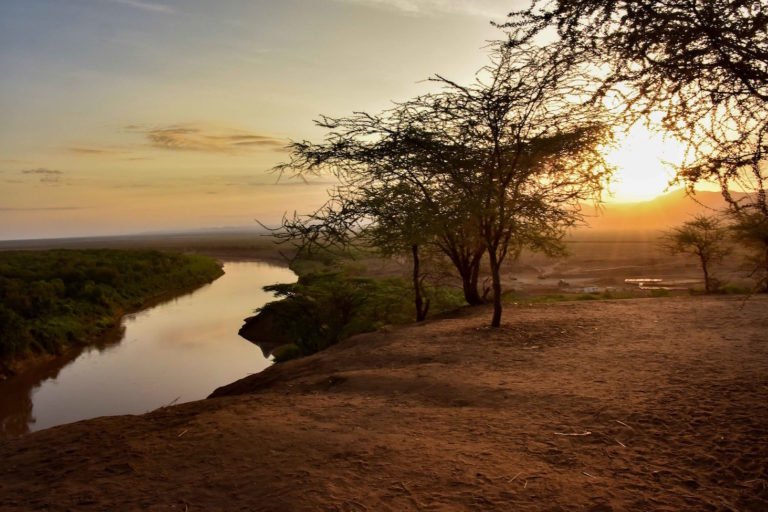- Large agricultural investment projects are often promoted as a way to increase food production and food security, but a recent analysis indicates that such projects often threaten water resources that local farmers and Indigenous populations depend on.
- While such investments can increase crop yields through the expansion of irrigation, the majority of the 160 projects studied were found to be likely to intensify water shortages through both the adoption of water-intensive crops and the expansion of irrigated cultivation.
- In effect, the researchers say, such deals can amount to “water grabs,” creating a crisis for local farmers who now find themselves competing with big investors for limited water resources.
In Africa and beyond, large-scale agricultural investment projects have often been promoted as a means to increase food security and boost economies in the face of drought and famine, increasing efficiency and opening up new land for farming.
However, a recent analysis of 160 land deals across 39 countries indicates that, more often than not, such projects in fact target land that already has easy access to irrigation; put a strain on water resources; and compete with local smallholder farmers.
Researchers led by Davide Danilo Chiarelli, of the Polytechnic University of Milan’s civil and environmental engineering department, studied land deals made between 2005 and 2015 across Europe, South America, Africa and Asia. They analyzed records of land acquisitions, hydrological models estimating water availability, and data on crop water demand, to figure out how much water individual land deals would require.
“The main goal of this study was to evaluate the extent to which transnational land investments entail appropriation/grabbing of water resources for irrigation,” says study co-author Paolo D’Odorico, professor of ecohydrology and water resources at the University of California, Berkeley.
The study found that while big agricultural projects did generally increase crop yields by expanding irrigation, in 105 of the 160 land deals analyzed, the new investors ended up competing with local farmers for water. Most large-scale land acquisitions were found to be close to rivers or groundwater sources that could support irrigation. “Land investors target areas with better access to water resources,” D’Odorico says.
Moreover, by planting crops with high water requirements, like palm oil, sugarcane and cotton, large-scale agricultural expansion has resulted in water crises for smallholder farmers growing traditional staple crops in the same region, the research showed.
The situation amounts to a “water grab,” D’Odorico says, which occurs when there’s not enough water available to meet demand and investors have the leverage to make sure their projects’ needs are met first. “This means that if an agribusiness investor acquires some land and starts irrigated agriculture, farmers in the same areas will not have enough water to irrigate,” he says.
Large-scale agricultural expansion
The study also indicates that large-scale agricultural land investments have expanded rapidly in low- and middle-income countries. Of the 160 deals analyzed, 73 were in Africa, 43 in Asia, 33 in Europe and 11 in South America, with an average size of 26,000 hectares (64,200 acres).
To evaluate the emergence of water scarcity associated with these deals, the researchers evaluated the large-scale land purchases recorded in the Land Matrix database, which contains information about international and local land purchases. They also looked into crop coverage before land purchases and current irrigation scenarios.
They combined this with hydrological models estimating water availability and data on crop water demand to figure out how much water individual land deals would demand. To evaluate scarcity, they compared water consumption for agricultural, domestic and industrial needs in each reported location.
In 105 of these deals, the analysis indicated that if the planned crops were grown across the entire area acquired by investors, it would result in a substantial increase in water scarcity due to unsustainable irrigation. “The irrigation water requirements associated with the intended agribusiness expansion cannot be sustainably met,” the researchers noted.
Only 47 locations, representing just 5% of the land area analyzed, were assessed to have sufficient water available to sustainably support the intended agribusiness.
Additionally, much of the ongoing and planned expansion of large-scale agricultural will take place in already water-scarce regions like Ethiopia’s Omo River Basin and the Gambella region, along a tributary of the Nile River.

“There is the need for better water governance and for an explicit recognition of possible occurrence of ‘water grabs’ in areas affected by large-scale land acquisitions,” D’Odorico says. “We need to have forms of protection of local farmers who risk to lose access to the water resources they have historically used or had the option to use in the future.”
Rudolf Makhanu, a natural resource and management expert at environmental NGO Nature Kenya, says this study effectively illustrates a phenomenon he has observed across Africa. “The paper captures what is actually happening in many countries,” Makhanu says, adding there’s growing evidence that large agricultural land deals have negatively impacted the environment, threatening and displacing best agricultural practices and rural livelihoods.
However, Makhanu notes that analyzing future water demand based on what investors say they intend to do with the land can give inaccurate results. “Some of the [agricultural land deals] are a front to hidden interests, so do not proceed to actual operation,” he says. “For instance, forested landscapes or wetlands are targeted for large-scale land acquisition for food production on paper, when the actual interest is to clear the land and access the hardwood. Once the land is cleared of precious wood, the investors close shop, pretending that the project has collapsed.”
Banner image: children above Ethiopia’s Omo River, by Rod Waddington via Flickr, (CC BY-SA 2.0).
Citation:
Chiarelli, D. D., D’Odorico, P., Müller, M. F., Mueller, N. D., Davis, K. F., Dell’Angelo, J., … Rulli, M. C. (2022). Competition for water induced by transnational land acquisitions for Agriculture. Nature Communications, 13(1). doi:10.1038/s41467-022-28077-2
FEEDBACK: Use this form to send a message to the author of this post. If you want to post a public comment, you can do that at the bottom of the page.











